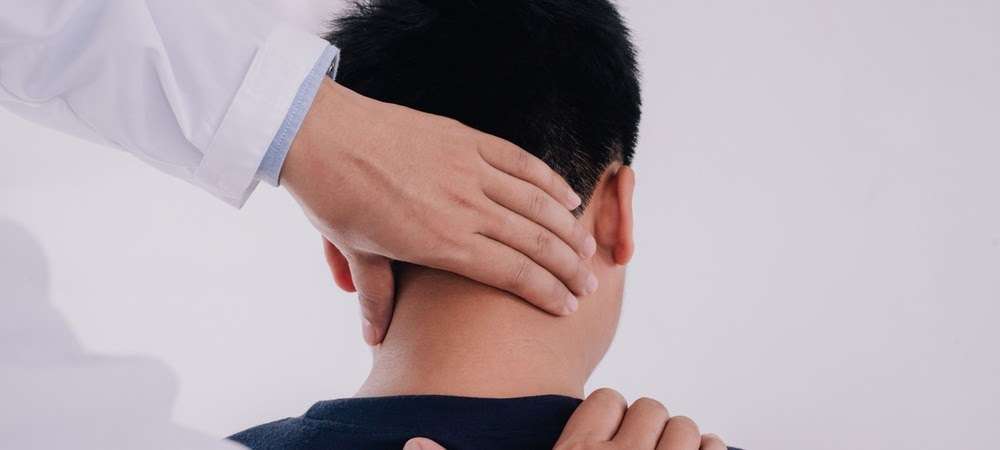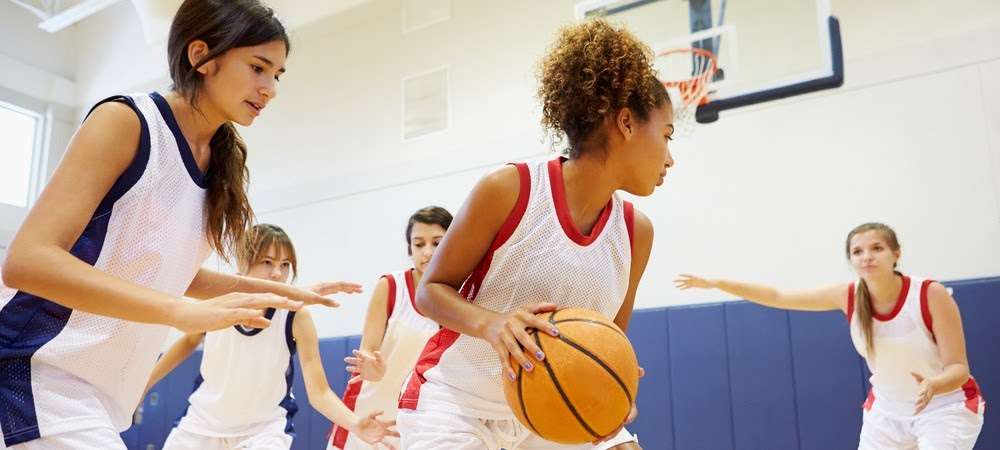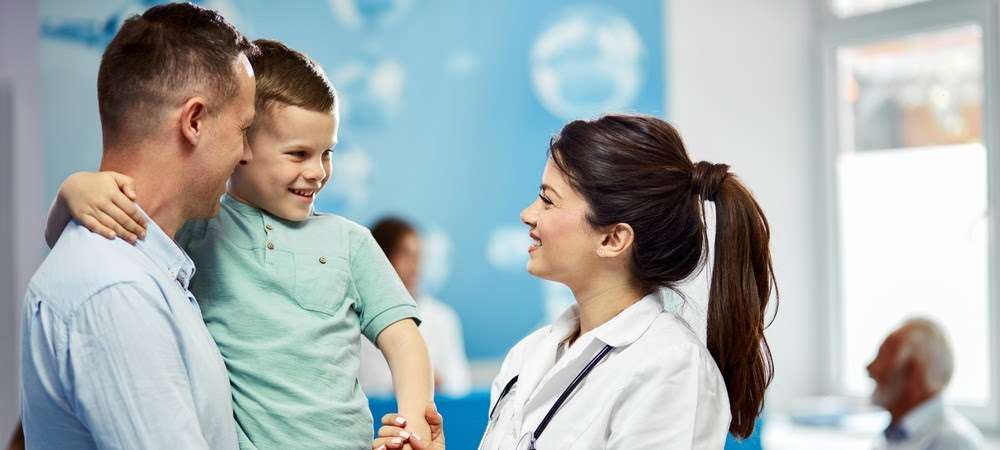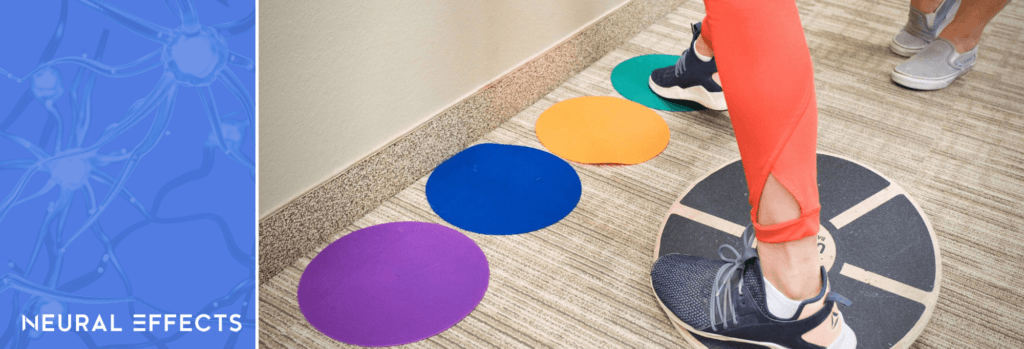If you’re reading this, you (or your child) may have suffered a concussion while playing sports. Inevitably, playing sports increases the risk of falls and collisions with equipment or other players, which can cause concussions. This can happen with all sports, not just contact sports, like hockey or football.
Recognizing that an athlete has suffered a concussion and getting proper treatment is absolutely crucial. If you suspect an athlete of having a brain injury, remove them from play and have them assessed by someone with medical training. No matter how much they want to keep playing, they should only return when their healthcare provider approves.
This strict process can be hard to accept, especially for young athletes keen to go back to their sport. If you’re a parent of a concussed child, you can take concrete steps to support them throughout their journey to recovery.
In this post, we aim to help you by explaining:
- What a sports concussion is
- How to have a sports concussion assessed properly
- What treatment of a sports concussion involves
- What to know about return to play
- Factors affecting recovery
- Additional tips on how to help your athlete recover
If you live in Provo, Salt Lake City, or anywhere else in the Utah valley area, we can help you recover from your concussion and reduce your chance of long-term symptoms. We are in network for most types of medical insurance. Schedule your evaluation today.
What is a Sport-Related Concussion?

Physical contact is part of the game in many sports, making sport-related concussions inevitable. This is particularly true for contact sports, but it can also happen in non-contact sports, such as volleyball, running, and tennis.
Trauma to the head can result from direct or indirect contact. Direct concussions can happen when players collide with each other, equipment, or the ground. Sport-related concussions can also occur indirectly when a jarring movement or whiplash forces the brain to move violently forward and backward or side to side.
According to the Concussion in Sport Group’s (CISG) 5th international conference, the current definition of sport-related concussion involves the following criteria:
- Direct or indirect hit anywhere on the body with a sufficient force to be transmitted to the head
- Symptoms that appear anytime, from seconds to hours after the injury
- Normal CT scans or magnetic resonance imaging (MRI) scans indicating a functional, rather than structural, injury
- A possible wide range of symptoms including loss of consciousness (which only occurs in less than 10% of concussions). These symptoms can resolve quickly, but in some cases recovery may be prolonged.
- Symptoms that cannot be explained by alcohol, drugs, medication, or other injuries.
Sport-related concussions are mild traumatic brain injuries (mTBIs).
Incidence of Sport-Related Head Injuries
The U.S. Consumer Product Safety Commission (CPSC) tracks injuries through its National Electronic Injury Surveillance System (NEISS). According to this data, there were over 450,000 sport-related injuries treated in U.S. hospitals in 2018. This number is just an estimate of total injuries, with the actual value likely to be much higher since the system does not include cases treated in urgent care centers or at home.
The sports (including recreational activities) with the highest number of head injuries in 2018 include:
- Cycling: 64,411
- Football: 51,892
- Playground equipment: 38,915
- Basketball: 38,898
- Exercise & equipment: 37,045
- Powered recreational vehicles (ATVs, dune buggies, go-karts, mini bikes): 30,222
- Soccer: 26,955
- Baseball and softball: 24,516
- Rugby/Lacrosse: 10,901
- Skateboards: 10,573
- Trampolines: 8,956
- Ice hockey: 7,668
- Skating: 7,143
- Golf: 6,357
- Horseback riding: 6,141
How to Assess Sport-Related Concussions

Pre-season
Caring for athletes begins before any practice or competition. Clubs should have information regarding each player’s medical history, including previous concussions and the presence of other conditions that may make treating concussions more complicated, such as a family history of migraines.
Many sports organizations recommend using a baseline evaluation before the season starts to help with diagnosis and return-to-play decisions for middle school, high school, college, and professional athletes.
Baseline testing is a pre-season exam that assesses brain function and balance. In the event of a suspected concussion, healthcare professionals run the test again and then compare the two sets of results. This helps determine if and when athletes can resume sports safely.
Initial assessment after injury
Anyone with a suspected concussion should be removed from play immediately. Once removed from play, athletes should not be allowed to return to activity for at least that day.
If the athlete is showing any of the signs below, they may need medical attention at the nearest emergency department:
- Severe neck pain
- Double vision
- Weakness or tingling/burning in arms or legs
- Severe or increasing headache
- Seizures
- Suspicion of cervical spine injury or skull fracture
- Loss of or deteriorating consciousness
- Repeated vomiting
- Increasing confusion or irritability
- Unusual behavior
Even if they aren’t showing any of these symptoms, players still need to be evaluated by a sports medicine physician or other qualified medical professional with experience in concussion diagnosis.
Ideally, this assessment will include a detailed neurological examination, as well as an evaluation of balance; mental status; and cognitive, vision, and vestibular function. This may involve seeking additional information from parents, teammates, and coaches, especially if there are any behavioral concerns. Someone should stay with the player before and after their assessment in case their symptoms deteriorate in the hours after the injury.
This initial assessment and diagnosis may include tests such as…
- modified Balance Error Scoring System (mBESS)
- vestibular/ocular motor screening (VOMS)
- Post-Concussion Symptom Scale (PCSS)
- Sports Concussion Assessment Tool 5 (SCAT5), which includes both the mBESS and PCSS
- Immediate Post-Concussion Assessment and Cognitive Testing (ImPACT)
Usually, these tests are used in tandem because there is no single test that is 100% effective. Even widely-accepted tests, such as the mBESS, can have questionable results.
Perhaps the most well-known and thorough test is the Sport Concussion Assessment Tool (SCAT), which has undergone several phases to optimize its usefulness. The SCAT5 is the most recent version. An athletic trainer or school nurse administers an immediate, on-field assessment after an injury, looking for any symptoms that may need urgent medical care. The test also includes a cognitive assessment, postural stability evaluation, and a cervical spine assessment.
The SCAT5 is quite a long exam, and not all of it is done on the sidelines. Once it’s been established that there are no symptoms that need immediate medical attention, athletes can finish the test in the locker room or office examination room.
If the athlete is diagnosed with a concussion, they should no longer play until they complete the required return to sport protocol.
Expect concussion assessment to improve as researchers work to design new tools to measure parameters like reaction time, speech pattern, or postural stability. The aim is to make concussion diagnosis more accurate by using objective criteria rather than subjective measurements.
Treatment of Concussion in Sports at Neural Effects

Many medical professionals still recommend staying in a dark room until concussion symptoms clear — a technique known as cocooning — but this is outdated advice that has been proven ineffective by scientific studies. New evidence shows that a short rest period of 24-48 hours, followed by a gradual return to physical activity (as long as it doesn’t trigger symptoms), significantly improves symptom recovery.
The 48-hour rest period should include both cognitive and physical rest. (Try to avoid video games since they put so much stress on the brain.)
At Neural Effects, we’ll help you follow return to play protocol while offering additional therapy to help you (or your child) recover faster and reduce the chance of developing post-concussion syndrome. We begin therapy as soon as possible after the 48-hour rest period. Our sessions include cardio exercises and breathing techniques, as well as vestibular, neuromuscular, and cognitive therapy. Many concussion clinics do not have the resources to offer all of these therapies in-house; we do.
Cardio is usually done on a treadmill or a stationary bike. The aim is to raise your heart rate to improve blood flow in the brain but not enough to trigger worsening symptoms. We will also teach you a series of breathing techniques to help you recover from exercise and calm your nervous system.

Some of the most common symptoms after a brain injury include vision problems, light sensitivity, dizziness, and vertigo. We address these issues with vision and vestibular therapy to get the eyes and vestibular system working in harmony again.
In addition, we have you complete neurocognitive exercises, typically presented as games, such as finding hidden patterns, solving logic puzzles, and memorizing images. These exercises help resolve symptoms like memory issues, brain fog, and difficulty concentrating.
Finally, the last type of therapy we use is neuromuscular therapy. We massage your neck to help relieve tension and improve blood flow in the brain. We also guide you through multiple exercises designed to challenge the brain into re-establishing healthy communication pathways, including tasks such as hitting targets with lights in random patterns or balancing on a Bosu ball while playing a memory game.
After each session, you’ll receive a list of exercises to complete at home, including cardio, cognitive games, and breathing techniques. Doing these exercises gives you a better chance of a fast, full recovery.
Return to Play

During and after treatment, athletes should slowly increase their activity level as they return to normal activities. Once you feel better, you may think that you’re ready to get back to training and competitions, but there’s one last hurdle to overcome: return to play protocol. You can learn more about return to play protocols from the Centers for Disease Control and Prevention (CDC).
Return to play protocols often include a series of six steps that are done sequentially, with each step lasting a minimum of 24 hours. In most cases, return to play takes about 7-12 days to complete as long as you don’t have any recurrence of symptoms.
This process should only be initiated when you:
- Are symptom-free when resting
- Are not taking medications that may mask concussion symptoms, such as painkillers for headaches
- Have returned to either school or work
If it’s impossible to get assessed by a healthcare professional with concussion expertise to certify that you comply with all the above criteria, you may need to wait 7 days after your injury before commencing the protocol. This means that returning to play will take at least two weeks.
The process can also be extended if symptoms get worse or new symptoms arise. If this happens, you should stop all activity and rest for a day. Then start again from the previous level.
The return to play process is outlined below:
Return to Play Protocol for Management of Concussion in Sports
| Stage | Rehabilitation Stage | Exercise Allowed | Objective |
|---|---|---|---|
| 1 | Back to regular activities | A few days of rest followed by light activity. | Return to normal |
| 2 | Light exercise | May include walking, swimming, and stationary bike. No resistance training or weight lifting. | Increase heart rate above baseline activity |
| 3 | Sport-specific exercise | Simple movements like running or jumping drills. Limit head movement and avoid contact. | Add movement |
| 4 | Non-contact training | Progression to more complex activities that require coordination and attention. | Regain coordination |
| 5 | Full contact practice | Normal training but closely monitored. | Assess functional skills |
| 6 | Return to play | Normal practice. |
Stage 1: Back to regular activities. Athletes can return to school or work. This stage includes a few days of rest, followed by a light activity such as short walks or riding a stationary bike.
Stage 2: Light aerobic exercise of low intensity. The aim is to increase heart rate above baseline activity with actions such as walking or gentle cycling.
Stage 3: Exercise specific to sport. Patients can start exercises specific to their sport, like running or jumping. Contact must still be strictly avoided.
Stage 4: Training but without contact. Resume regular exercises but continue to avoid contact. The aim is to regain coordination after a period of inactivity.
Stage 5: Resume full-contact practice. Patients can participate in practice drills, including contact, but close monitoring is advised.
Stage 6: Full return to play. Athletes can resume normal participation in the sport.
Dangers of Returning Too Early
As difficult as it may be to sit on the sideline while recovering from an injury, it’s extremely dangerous to return too early. If you get hurt again before the first concussion has healed, you may be risking severe symptoms and a long recovery time or even permanent brain damage. This is known as Second Impact Syndrome.
In Second Impact Syndrome, symptoms develop rapidly, beginning with the loss of consciousness, loss of eye movement, dilated pupils, and then respiratory failure. This can all happen in a matter of minutes and, although rare, it can be fatal.
Multiple concussions also increase the risk of developing a variety of neurological disorders later in life, including post-concussion syndrome, chronic traumatic encephalopathy (CTE), Alzheimer’s disease, Parkinson’s disease, and amyotrophic lateral sclerosis (ALS).
What Factors May Affect Recovery?

Like any other concussion, some factors may delay recovery. If you (or your child) fall into any of these categories, you may need more support from healthcare professionals.
Initial Symptoms: Many studies have shown that patients with severe symptoms are much more likely to have a lengthy recovery period. This seems to apply particularly to symptoms related to balance problems, memory deficits, and vision issues.
Concussion History: In addition to symptom burden, a prior concussion also seems to increase the recovery period. This is especially true if the second concussion occurs shortly after the first. For example, one study showed a much more extended recovery period for athletes who sustained two concussions within 24 hours compared to those that only had one.
Gender: Gender also plays a role during recovery after a concussion. Although TBI rates are generally higher in males than in females, female athletes have a higher risk of long recovery times, especially with cognitive and emotional symptoms.
Age: Many studies show that children (under 18) need longer recovery periods than adults. This is believed to be because adults have greater neck strength to control the movement of the head during a traumatic event.
How Can You Help Your Loved One Recover?

If someone you love has suffered a sport-related concussion, there are several things you can do to support them and help them recover:
Follow the doctor’s advice: Make sure they follow their doctor’s advice. Rest during the first 24-48 hours is critical, after which mild exercise, such as walking or swimming, can be introduced as long as it doesn’t trigger severe symptoms of concussion.
Monitor sleep: The brain needs to rest to be able to heal. Ensure they get a full night’s sleep and report any major changes in sleep patterns to the doctor.
Remember that concussion recovery takes time: Recovering from a concussion can be a slow process. Adolescents in particular may think they’re healed as soon as they start feeling better. If needed, speak to their doctor about ways to make sure they follow their recovery plan as closely as possible.
(If they’re a minor) Ask their teachers for support: Inform their teachers about the concussive injury and ask for their support during recovery. This could include extra time to complete school assignments or a lighter schedule. Regularly ask for updates on academic progress and symptoms to see whether they’re improving.
Seek medical help if symptoms are not improving: Go back to your doctor if symptoms do not improve after a few days. We recommend active therapy at a concussion clinic such as Neural Effects since you will receive thorough care and a concrete plan for recovery.
If you live in Provo, Salt Lake City, or anywhere else in the Utah valley area, we can help you recover from your concussion and reduce your chance of long-term symptoms. We are in network for most types of medical insurance. Schedule your evaluation today.
